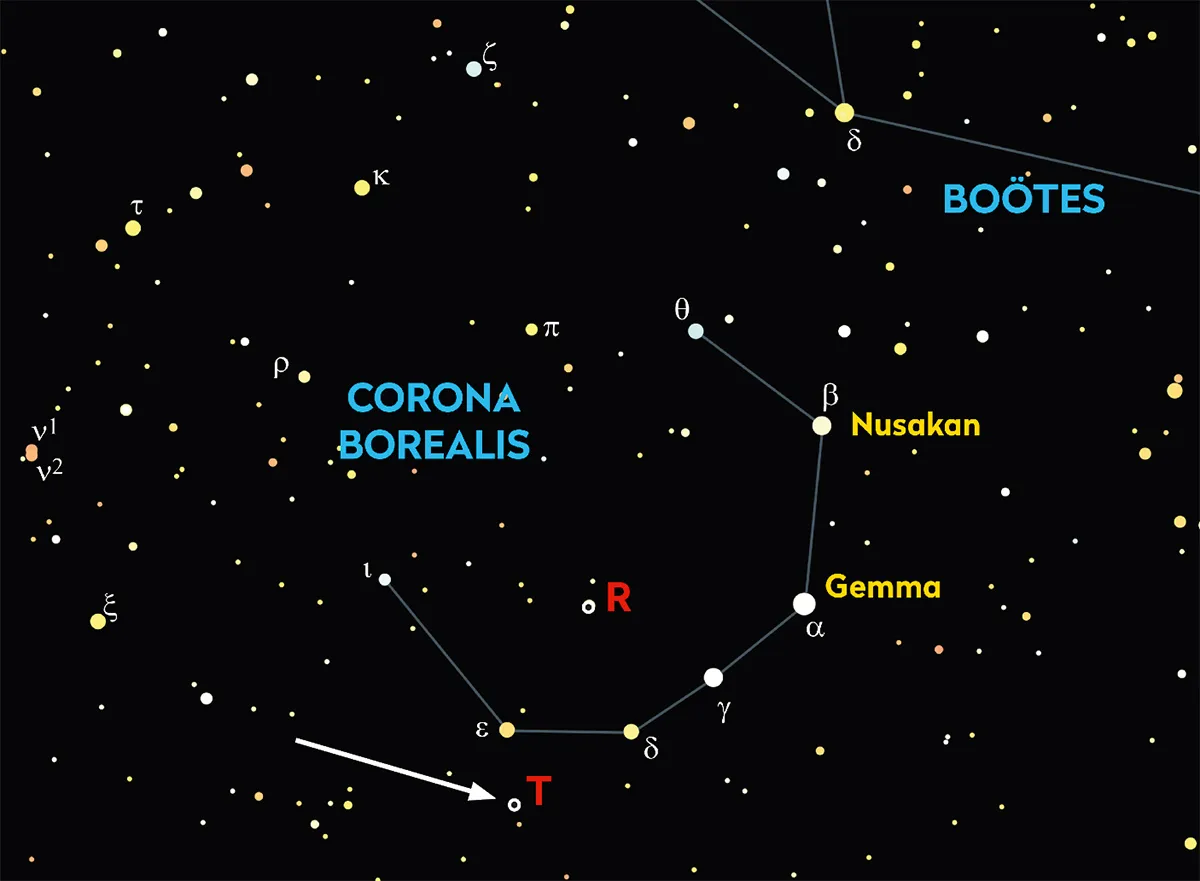Sometime in the next year or so, if predictions are to believed, you’re going to be hearing a lot about a famous star.
T Coronae Borealis, or T CrB for short, also known as the 'Blaze Star', was the first well-observed nova, blossoming into sudden brilliance in 1866 and then again in 1946.
These observations point to a period between eruptions of about 80 years, and so astronomers expect T CrB to brighten to maybe fourth magnitude around about now.

Uncovering the secrets of nova events
The mostly Italian authors of one research paper have been observing the star for the last few years, aiming to understand what happens as a new nova event approaches.
Like all recurrent novae, T CrB consists of a white dwarf star with a larger star – in this case a red giant – for a companion.
It is what’s known as a symbiotic binary, with material from the giant flowing onto the white dwarf.
Once enough material builds up on the white dwarf’s surface, thermonuclear reactions can start and we see T CrB brighten in the sky.
The star had long slumbered since the outburst in the 1940s, but its spectrum and brightness started to change in 2016.
It brightened quickly and then slowly returned to normal over the course of nearly eight years.

Taking a closer look at the Blaze Star
Spectral observations made during this period suggested that we were seeing more light from the accretion disc around the white dwarf. Just what we’d expect as material began to accumulate.
Careful modelling suggests the disc is massive, with a radius 58 times greater than the Sun’s, and there is evidence for a bright hotspot where new, warm matter is hitting it.
This hotspot didn’t brighten as the star changed. This first phase, then, doesn’t result from more material flowing from the giant, but must be due to changes in the disc itself as material builds up.
The star then suddenly dipped in brightness, not just in the optical but also in ultraviolet observations the team took with the Swift satellite.

Why hasn't the Blaze Star blown?
What seems to be happening is that the accretion disc reaches a maximum stable mass, and at that point ‘flushes’ material down towards the white dwarf.
We see a fading star, but the conditions for an outburst, with matter building up on the white dwarf, are set.
A comparison with historical observations – with the brightness of T CrB measured in painstaking fashion by researchers poring over digitised images of photographic plates from the 1940s – shows remarkable similarity right up until 2023, when the star recovered its former brightness.
But while last time the main outburst occurred six months after the end of the dip, we’re still waiting; it seems likely that less material has made it onto the white dwarf so far.
The research team calculate that about a tenth of an Earth mass has been transferred to the white dwarf to date: clearly not enough to trigger an outburst.
Theoretical models disagree with each other, but all suggest we must be getting close.
Material is flowing onto the accretion disc once more, and at some point, inevitably, it will reach that critical mass.
When it does, telescopes around the world will once more point at what was once the most famous star of them all.
Chris Lintott was reading T CrB: Overview of the Accretion History, Roche-lobe Filling, Orbital Solution, and Radiative Modeling by U Munari, F Walter et al. Read it online at: arxiv.org/abs/2507.23323.
This article appeared in the October 2025 issue of BBC Sky at Night Magazine

